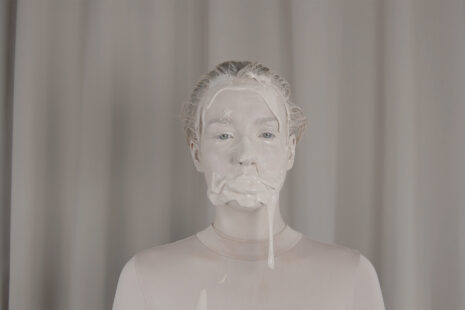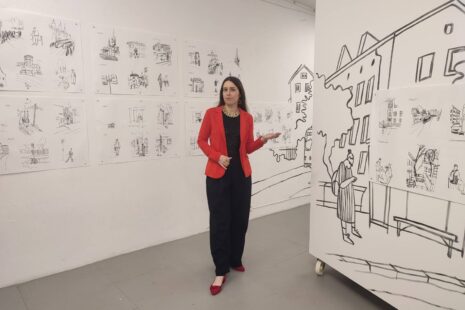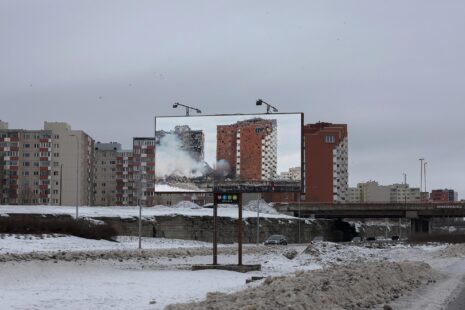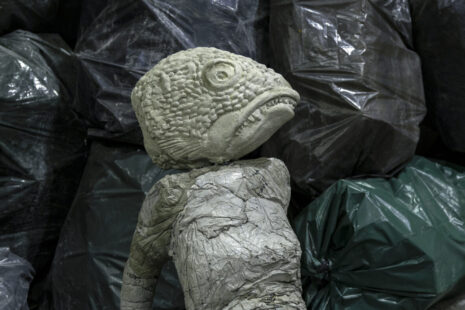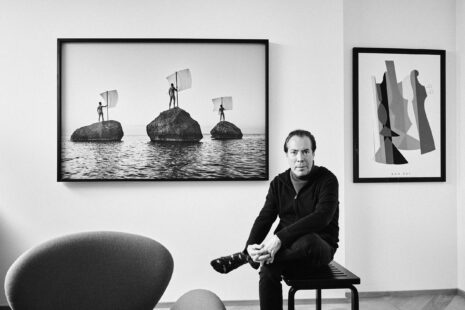Varvara, four years ago when I visited your studio at the ARS House, you were involved with 3D printing. Back then it was something new and modern, now it has become quite common. What exactly did you work on then and do you still use it today?
I still use it. Above all, we print non-standard fasteners and details for our art installations. For example, we have printed a dozen knitting machines that we invented ourselves. The project is called Circular Knitic, which is about soft digital production. 3D printers do not necessarily only need to reproduce themselves; they can also be used to make other machines.
With new technology, it people are talking about it constantly, not imagining life without it. After a while, the bubble subsides and the area stabilizes. 3D printing is now available to the average user, as is artificial intelligence (AI). Of course, machines have improved and you can already print good quality stuff, but those printers are more expensive and materials are even more expensive.
You have also conducted several workshops in Estonia. For example on electronics and programming at the Textile Department of the Estonian Academy of Arts and the Innovation and Entrepreneurship Center of Tallinn University of Technology, Mektory. Was it more for hobby-inventors or were there actual projects generated that could develop (art) entrepreneurship?
I can’t tell whether an art project was completed as a direct result of the workshop. The workshop in Mektory produced some projects with both business and non-commercial potentia. I also know thata growing number of creative people are taking interest in electronics, Arduino and machine coding and new ideas are being worked on. However, learning new things takes time and in a 6-hour workshop, it is extremely difficult for participants to achieve working results.
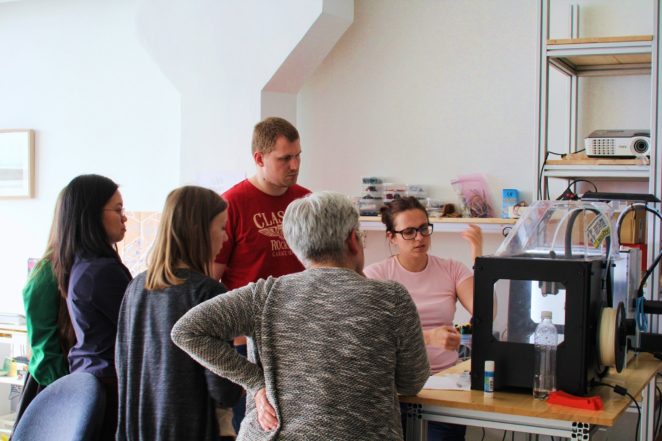
3D printing workshop
The Data Shop installation, which has already travelled the world, has data stored on canned websites lined up on store shelves. This is how you raised questions about the market value of personal information. At the same time, much of your creation relies on different data exchange solutions. Where does the freedom to share data start and end?
The Data Shop canning series is not only web-based, but comprises personal data and self-monitoring, meaning that only our personal information is stored, and not anyone else’s. For example, one can of Data Beans contains information about our sleep, heart rate, physical activity and calories consumed.
Through our work, we want to point out that the post-digital age is not just on the web, but everywhere, it is part of us and our lives.
And worst of all, the user has no control over his or her personal information, including your house plan and your child’s blood type.

Data Shop
As artists, we focus our art projects on contemporary paradigms and available data and raise issues that are about freedom and responsibility. We can see on Facebook that even a major player like Mark Zuckerberg does not want to take any responsibility. However, many political events or choices have been made by the influence of Facebook without users being aware of it.
Do you have any suggestions for an average person like noar.eu reader to survive in such a world?
There is not so much we can do. That is why the topic is overwhelming and depressing. It bothers me that there is so little data protection in Estonia. Simply tap on the name of a person or company and almost everything becomes available. In my opinion, all the information Estonian state and public institutions make public, are setting limits to our privacy.
Here are a few tricks though: avoid smart devices (especially at homes), read the terms and conditions before pressing the accept button, refuse to give access everywhere, review your privacy settings and do not disclose everything. This list could be continued for quite some time.
You are currently touring around within WasteArt project and PlasticLand, a video sculpture about another major concern – the global waste problem. How has this project been received by the audience?
Unfortunately, I cannot say because I have not seen the exhibition yet. The first exhibition in Cesis had more than 3400 visitors, soon the next one will open in Tartu Nature House. I very much hope that not only our work but the whole exhibition will be successful!
The topic of waste is critical and our society cannot survive without changing its habits. We need to think about the environment, not about profits, cheapness and comfort.
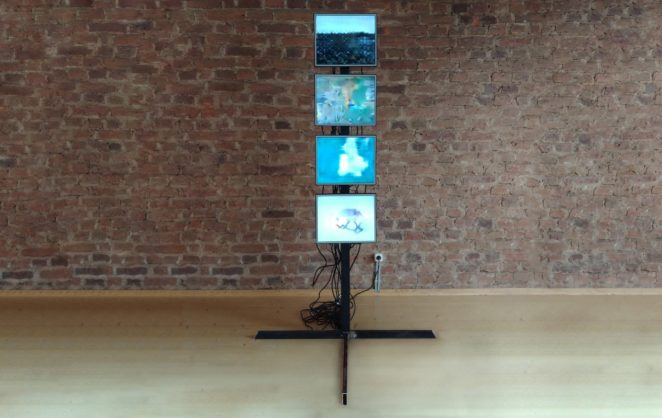
PlasticLand
What’s the deal with the knitting? Jaanus Samma had a bunch of graffiti-inspired sweaters knit on his nipples, you had them knit by your machine, spam-patterned.
As spam is the first digital pollution and electronic knitting machine is the first digital production tool at home, we decided to generate poetry from the spam donated to us and present it in woven form. Like spam, poetry is assembled by a machine.
The SPAMpoetry project, which started in early 2012, also forced me to learn to knit on the machine. So, it was my nipper. Besides, the old machine had to be reprogrammed to automate pattern insertion. At night, the system inserted a pixel-by-loop pattern and during the day, I knit non-functional garments – so we call SPAMpoetry knitwear that can’t be worn. As with other works, the process is an integral part of the art. Therefore, it was important for us to knit ourselves and modify the machine accordingly.
Is this program available to others?
We released our development – making the old knitting machine computer-friendly – freeware under the name of Knitic, which received a lot of attention in the knitting community. This, in turn, led us to a new project, Circular Knitic, which combined digital manufacturing with textiles. All of this led to the innovative Fablabs and Maker Space launching into textile world. For example, we are conducting a course at Fabricademy, where we inspire participants to invent new machines that go into soft digital production.
Handicraft has attracted many artists and activists, such as guerilla knitting and craft activism. The last book, titled “Betsy Greer,” was written being inspired by an interview with us.
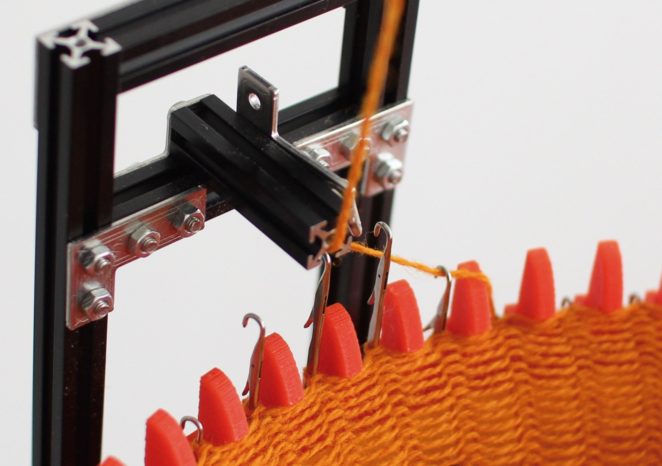
Circular Knitic
You’ve implented art projects also for Estonian public sector – Puppet Theater NUKU (Roof Boys project) and Neural Landscapes for the History Museum. Is there any difference between pure art and custom work?
So and so. It all depends on the subscriber. Roof boys hold both ours and NUKU’s faces. Within such requests, the artist acts as an architect, trying to figure out what the client wants, what is appropriate, what can be done and what is allowed to be done at all. When handing over a work of art, the client commits to the project and verifies that everything has been done as agreed. This process is a bit unfamiliar to the artist because you usually never know where the original idea might take you. However, with such orders, you usually have to get the work done on paper first.
The cooperation with the History Museum was different. They introduced their curatorial vision, to which we responded creatively. In this project, we were quite free to act, except for the deadline and the budget, which is expected in every project.
For your part, Google and Barbican commissioned you to work on the Digital Revolution. The result is digital butterflies hatched from participants’ requests. What were the terms of the customer here?
There were several conditions. Most importantly, the installation was stunning, both technically and visually. As there were other works on display, our installation was not supposed not resemble any other. We only heard this later, when the original idea had already been approved and the work was in progress. But yes, it took a while to figure out the idea.
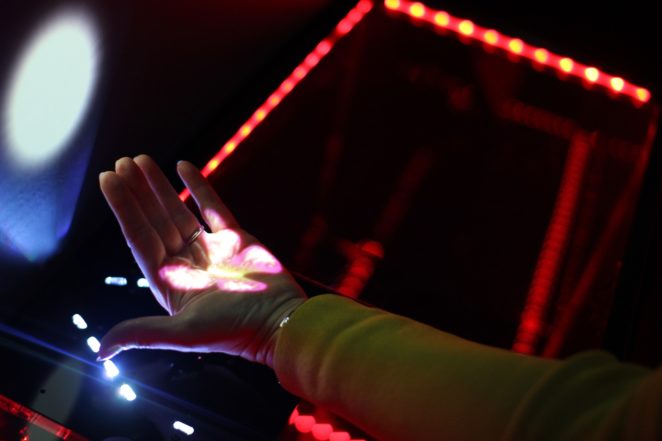
Wishing Well at Digital Revolution
In cooperation with Bloomberg, the financial giant, installation Speed of Markets, a visualization of stock market activity, was born. How did this project start, on whose initiative?
This story is like a movie. Following the opening of the Digital Revolution exhibition in London, a gallerist came to us and expressed his desire to represent us. As an ex-banker, he immediately liked the idea of an installation where metronomes tick in the rhythm of world markets. We got to work right away, as we were first presenting the work at the London PAD Art and Design Fair in October 2014, followed by the New York Salon, Miami and Art Basel, London Art 15.
In addition to making a metronome and having it ticking, the main concern was how to access the most expensive information – we were interested in the number of transactions. We sent an email to Bloomberg introducing our project and introducing our interest in the data.
After long-lasting negotiations and interaction with their developers, we gained access to near-real-time global market transactions that gave rhythm and life to the seven metronomes that marked the activity of the stock exchanges.
Bloomberg worked with us because they were interested in innovation, motivated to do something nobody had asked them so far.
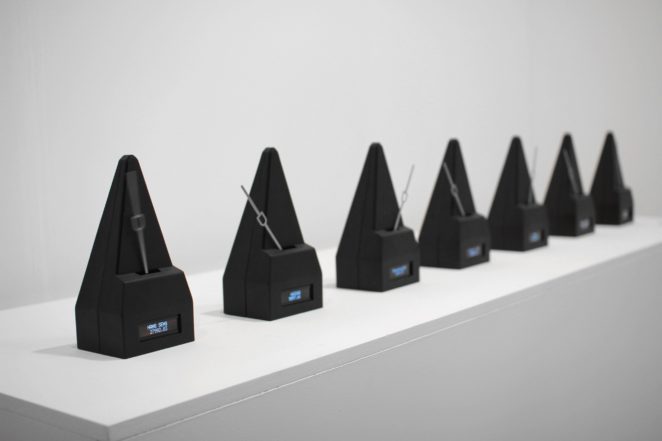
Speed of Markets
What happened next? How was the feedback?
When we showed the installation of Speed of Markets at the group exhibition In Time curated by Shannon R. Stratton at the Museum of Art and Design (MAD) in New York, we were honoured to personally meet the Bloomberg Development Manager who came to the terminal install.
As part of our collaboration, we visited Bloomberg offices in London and New York, both are full of contemporary art. There was a great feeling and desire for more companies to emphasize the value of art and to support active artists. I would like to hope that the private sector in Estonia will become interested in art as well.
What other companies have you worked with or are planning to do? What exactly do such symbioses give to both sides?
We have negotiated with many, but very few actually go live, especially if there is an advertising agency acting as a mediator. Frankly, I don’t understand why so much money is spent on advertising!
At the same time, I think being involved in art offers businesses a lot. They can show that they are innovative, intellectual, caring, bold, up to date – you name it!
In addition to the clients, the employees value the company more as cooperation with the artist urges them to think differently. For an artist such cooperation gives better income, new experiences, a feeling that his/her work matters and an opportunity to work with a certain location or person.
And what does art offer you?
This is a good and difficult question. If there is frustration in the air, I ask myself the same thing. But then again a new crazy idea appears forcing me to work and so the process engages. Seeing my mindset and imagination transform into something enirely new is such a unique experience that it makes me act. Another aspect that keeps me practising art is being able to do a very diverse job, differentiate myself, express myself, offer the audience new experiences, ask questions, and even be provocative. There is probably a lot more which I cannot explain in words!
Photos: var-mar.info

